Chenhao Li’s Reflective Journal
In this reflective journal, I will be using RMIT university’s ‘Describe, Interpret, Evaluate, Plan’ (DIEP) strategy(2010) to talk about myself throughout semester 1 in MA Communication Design(MACD).
Describe
In semester 1, the given projects train our skills based on the iteration of the 5C model: Collect, Comprehend, Conceptualise and Create.
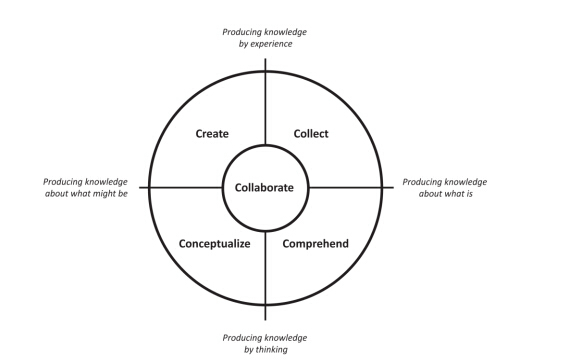
The first project is about myself. I created a map that visualises my journey from primary school to university. In this project, I designed a new music notation that can compose the music and the sounds.
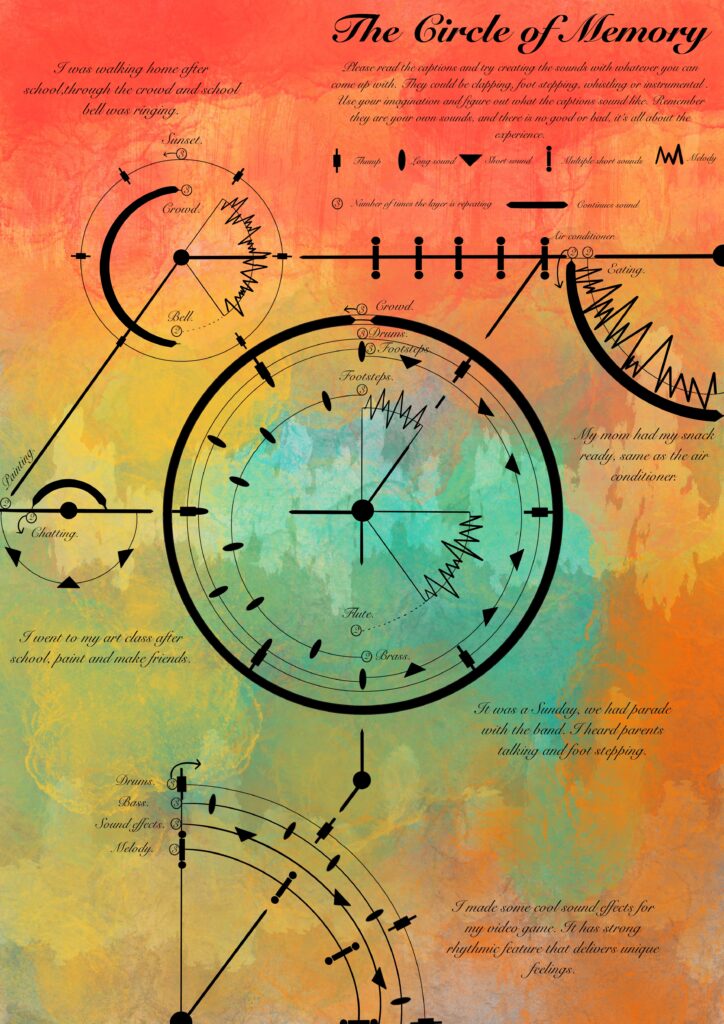
Project 2 focuses on the ‘Collect & Comprehend’ of the 5C model. I chose ‘activities in the park’ as my research topic to discover who usually goes to the park and what they do in the park. For the outcomes, I analysed the users and created a persona, a use case and a user journey map to showcase my analysis.
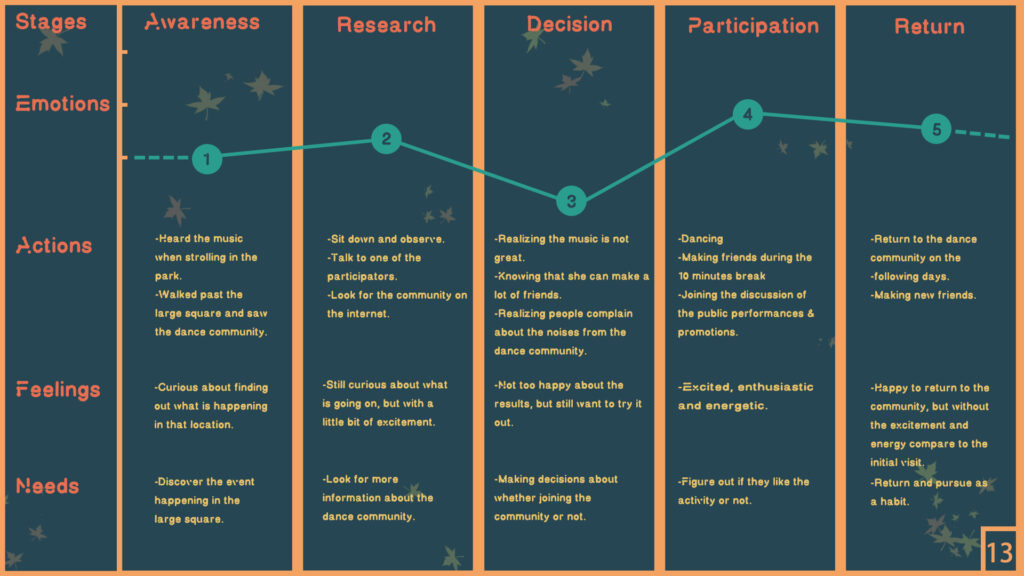
Project 3 is the ‘Conceptualise & Create’ part of the 5C model. In this project, I did less research and focused on the design and making of the products. I used the wireframe technique to sketch out my ideas and then made a paper prototype for user testing. After receiving feedback on the paper prototype, I then upgraded it and tested it again.
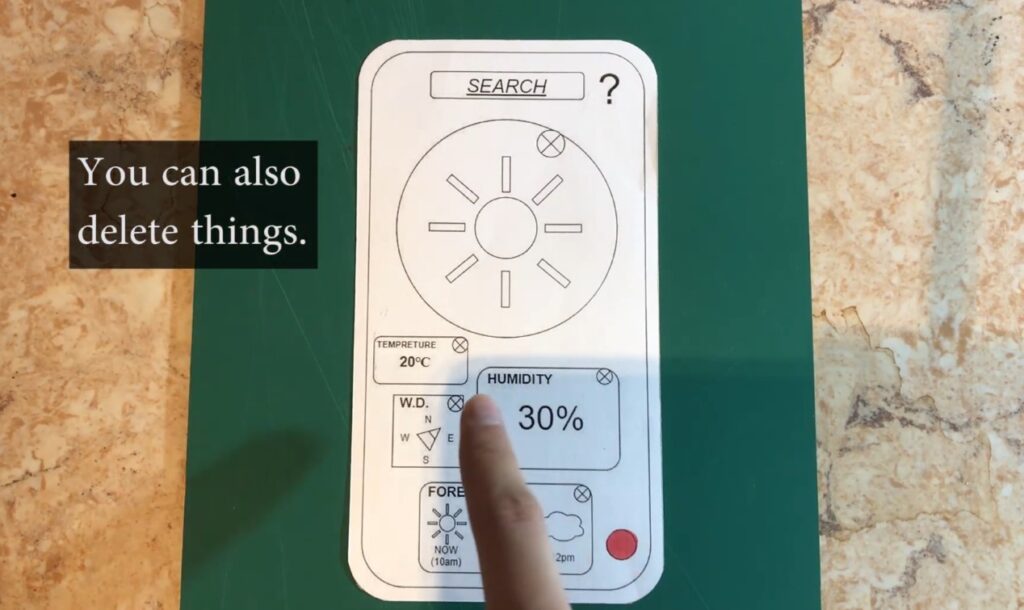
Project 4 goes by the entire iteration of the 5C model, which is an opportunity to test and evaluate the skills we have learned so far. In this project, I decided to create an app that notifies people about privacy leakage and avoid it when using the app. I have done a tremendous amount of research and even changed my ideas throughout the ‘Collect & Comprehend’ process. For the ‘Conceptualise & Create’, I started with the thumbnail wireframe and then made detailed designs based on it. I also made a digital prototype to make user testing more accessible. The outcome is a high-fidelity prototype.
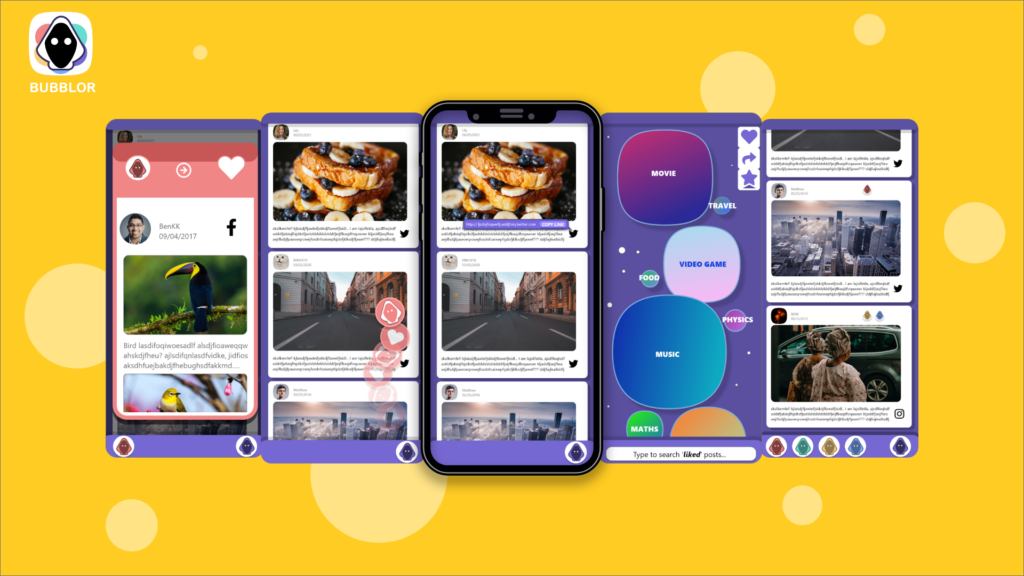
I also wrote nine blogs about design thinkings and contemporary issues. The majority of the blogs are done by the sketchnote technique, which is an effective way to conclude either talks or articles.
Interpret
Disassemble the 5C model into four projects helps me understand the design iteration and develop my own design process. I have never spent more than two weeks on research and analysis before, but after project 2, I realised that doing research requires patient and consistency. It is not about reading the general knowledge but observing the missing details throughout the entire process. For instance, I spent a week investigating the active hours in the park in project 2, and I had to make notes every day for six days. The results were extremely helpful in further research because now I know which hours are better to collect the data I need. Furthermore, in this project, I used an interview method introduced by Dr Saul Leod(2014); This technique helps organise my questionnaires and separate the interviewees into different age groups to receive effective results.
In the past, I only did brainstorming for ideations. However, after semester 1, I realised that brainstorming is essential in all stages because it allows me to navigate my interests and organise my thoughts. Project 3 is about user experiences that contain various approaches, such as emotions, feelings and struggles. Making brainstorms allows me to visualise my ideas and keep my thinking logical to avoid redundant thoughts. Mind Tools Content Team (no date) taught me an excellent way to develop my ideas, which is to show my brainstorms with other people in tutorials sessions. In returns, I often receive helpful feedback from my tutors and classmates.
Speaking of designing, I have paid more attention to the user experience than last year. When I was doing games design in the undergraduate course, uniqueness is always the essence of every project. However, MA Communication Design teaches me more about user-centred design, which changed my way of making the product. Previously in the Games Design, it was hard to playtest due to covid-19, and we can only describe the gameplay mechanics to a few people and waiting for the feedback. However, this year in Communication Design, more tutorials allow my classmates and tutor to discuss my ideas in detail and follow through with the entire project. More communication also means better user testing.
I have done four prototypes both physically and digitally throughout the semester. My physical prototype follows the instruction from Mariam Shaikh and Melissa Powel (2016, 3.55), which was the first time I understand the importance of a physical prototype because it allows the users to interact with the product and spot the issues directly. For instance, in project 4, I made a paper prototype and tested it with my parents. During the testing, my parents thought that there is too much information on one screen, although it looks nicer on the computer. In the end, I have taken this feedback and developed it in the new prototype.
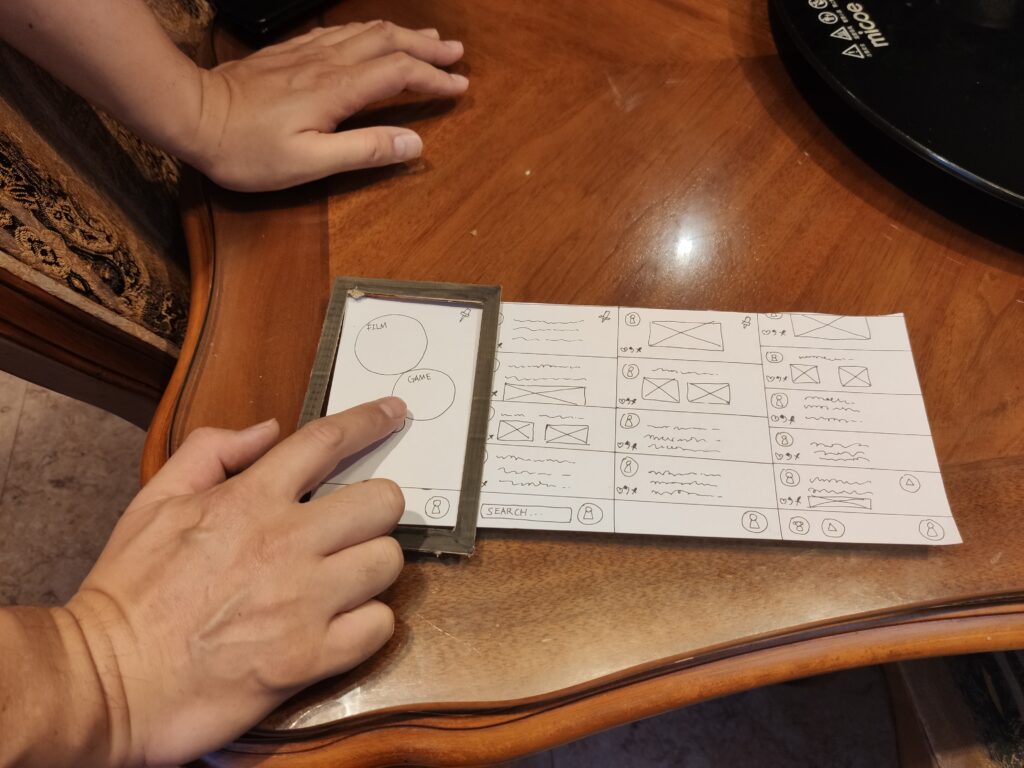
Evaluation
Overall, I have learned a lot of things during this semester. If my former experience in Games design taught me how to work as a designer, MACD teaches me how to think like a designer. My most significant change from the past is that I start to take time and do things slowly. I am not doing the work for the sake of the degree but putting myself into a designer’s position and work around it. Furthermore, I have always positioned myself as a game designer, which will still be in the future. However, by learning the general design methods from MACD, I am now more confident in designing things that are not game-related, such as apps and smart devices.
In addition, I was used to working in a team and only need to focus on a small portion of the project. In semester 1, I had to work from start to finish all alone without any physical assistance, and I think this was a great experience to test out my strength. I was lucky to have excellent tutors and classmates who consistently support me in both projects and life throughout the journey.
Now, let’s talk about things that I haven’t done well in this semester.
Firstly, it is the working balance between different parts of the project. For example, I spent too much time and effort researching project 4, and it turns out that most of my research is redundant because I was so eager to learn more before designing. The problem is that I wasted so much time and caused the delay of the project. Rick Swette(2017) has shared an inspiring thought on his blog, which is the purpose of doing research is to support our assumption, not to learn new things.
Secondly, I have a bad habit which is always wanting to do more work. It means that when I do things, I often look at the quantity instead of the quality. This problem caused the lack of details in my design.
Thirdly, one thing that I am trying to improve is the goal of the work. I sometimes work for the sake of finishing the task instead of learning or challenging myself. Danny, who is my tutor, also mentioned this in the tutorial sessions. He said that we should try reading more things that we think is good for ourselves, instead of just reading and reflecting on the links from the tutors.
Plan
So what should I do next? How do I get better?
The answer is clear: keep working and evaluating yourself. I found the DIEP strategy is beneficial because it forces me to rewind my journey and spot the good & bad. In the future, I will do a DIEP reflective journal by the end of every project to evaluate myself.
In addition, as a designer, it is essential to absorb the knowledge before working, which is why I need to read more books and resources to build my critical thinking. These resources do not only come from our class but also outside the school. Furthermore, reading and reflecting help me to improve my language skill, which I need to improve if I want to expand my career globally.
One of the struggles I had during semester 1 is the lack of artistic skill in different projects. For example, I haven’t done enough practice on making excellent visual work such as graphic design or animation. If I don’t improve this, it will affect the project’s quality or, even worse, causing the postpone. The first thing I will do is learn essential tools such as Adobe PS, AI, and XD and try doing small projects on them to understand the utilisation of each software. After that, I will understand which software I can use for the general design to mastering it.
In addition to the software utilisation, the most important thing is to improve my drawing skills, which is the essence of being a designer. I haven’t been to a life drawing session for a while due to the covid-19, but it doesn’t mean that I will stop drawing. Now the semester is over, and it will be an excellent opportunity to restart my drawing habit.
In conclusion, I have learned how to be a better designer through four projects and ten blogs. What I need to do right now is to focus on the details and try to learn more outside of the class.
Bibliography
REFLECTIVE WRITING: DIEP(2010), RMIT UNIVERSITY,
https://www.dlsweb.rmit.edu.au/lsu/content/2_AssessmentTasks/assess_pdf/Reflective%20journal.pdf
(Accessed: 10/05/2021)
Dr.Saul McLeod (2014), The Interview Research Method. Symply Psychology.
https://www.simplypsychology.org/interviews.html
(Accessed: 10/05/2021)
Mind Tools Content Team (no date), ‘Brainstorming — Generating Many Radical, Creative Ideas’, Mind Tools.
https://www.mindtools.com/brainstm.html
(Accessed: 10/05/2021)
Mariam Shaikh, Melissa Powel (2016), Rapid Prototyping: Sketching/ Google for Startups
(Accessed: 10/05/2021)
Rick Swette (2017), Examples of Insights for Design, medium
https://medium.com/ux-data/insights-for-design-real-anecdotes-b84309a8fc40
(Accessed: 10/05/2021)
Friis, SAK & Gelting, AKG 2014, ‘The 5C Model’, Paper presented at DesignEd Asia Conference, Hong Kong 2014, 02/12/2014 – 03/12/2014.
https://www.designedasia.com/2014/Full_Papers/2014/2_The%205C%20Model.pdf
(Accessed: 10/05/2021)